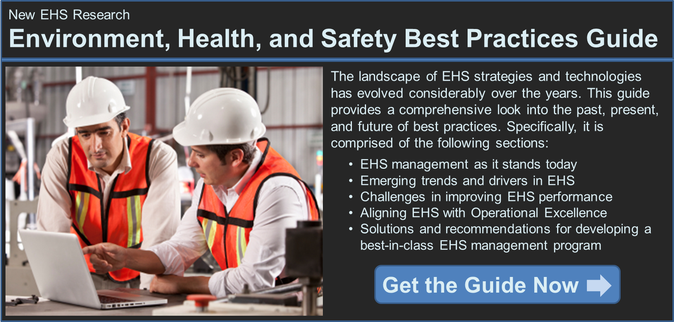 Management systems like those represented in the ISO standards and others have a major impact on what happens in the industrial setting. Whether we’re discussing those aimed at quality, environment, health and safety, risk, social responsibility, or energy management, each is designed to provide structure around resources—processes, procedures, and personnel—while enabling continuous improvement.
Management systems like those represented in the ISO standards and others have a major impact on what happens in the industrial setting. Whether we’re discussing those aimed at quality, environment, health and safety, risk, social responsibility, or energy management, each is designed to provide structure around resources—processes, procedures, and personnel—while enabling continuous improvement.
In many respects, these various systems are very similar—so much so that it begs the question: why aren’t more organizations integrating them? Identifying commonalities and then standardizing particular aspects of each system across the enterprise would certainly provide benefits to efficiency, cross-training, collaboration, and more, but most companies seem hesitant to take the leap.
This is a question we think is worth answering. And in this post we’ll explore similarities between management standards, the source of reluctancy in merging them, and the case for a common management standard.
Similarities between Management Standards
As we’ve written about in the past, every company’s on a unique Operational Excellence journey—whether focused on ensuring safety or quality, reducing environment impact, improving efficiency, or some other area. So, for many it makes sense to adopt a particular management standard or a mixture of standards to support progress toward those goals as the company grows and becomes more complex.
For reference, some of the most widely adopted standards, along with the functional area they impact are as follows:
- ISO 9000, Quality
- ISO 14000, Environment
- OHSAS 18000, Health and Safety
- ISO 31000, Risk
- ISO 50001, Energy
- ISO 26000, Social Responsibility
While it’s not at all uncommon for industrial and manufacturing organizations—especially large ones—to have more than one of these management systems in place, it’s worth noting that there’s a considerable amount of overlap between them. For instance, a corrective and preventive action (CAPA) process for EHS is virtually identical to one used for quality management. Similar cases could be made for audits, change management, and other processes.
Following this example, companies would benefit from conforming to a single instance of the CAPA process. It would be easier to monitor process health, provide training, improve the process based on enterprise-wide inputs, and support it with technology. So, why are there disparities between virtually identical processes?
The Cause of Hesitation
The standards noted above all aim to control and improve performance across the value chain. Each has its own set of requirements, best practices, processes, regulations, and is overseen by different departments and senior managers. Additionally, each tends to use different IT mechanisms for monitoring and reporting on performance.
When we look to our research, experiences, and interviews with industry executives, we can boil down the cause of hesitation of moving to a more singular way of operating to one thing. And it’s usually not technology-related. It’s often the people and culture! In some cases, as organizations grow, senior leadership tends to shape the culture, and as a consequence that culture takes precedence in decisions. Some companies may highlight quality as a top corporate value, while others may focus more on safety, each of which has its own corresponding management system which can end up taking the lead and energy away from others.
Also, it could be the case that a particular department becomes insular and protective of “their turf” (i.e. a particular set of processes, procedures, and, yes, even headcount). In such a case, management in that department may not care about what other departments are doing nor want to bother with conforming to a common management standard—essentially turning a blind eye to the potential enterprise-wide benefits.
Those are just a few examples, but the point is in manufacturing and industrial organizations, culture can be a powerful thing. It can be one of your greatest assets, but also be a roadblock for making decisions that will benefit the entire enterprise.
The Case for a Common Management Standard
Where a common management standard could be beneficial is in transforming the massive amounts of data coming from across the value chain into intelligence. Most of today’s organizations have limited visibility into and interaction with different areas of the value chain. And at a time where market leaders are talking about end-to-end, integrated processes, this type of siloed environment isn’t doing justice to the direction companies need to be heading.
The point is, you should be aligning these various management systems in a way that helps you move toward not just your department’s goals, but your organization’s Operational Excellence goals—however you define Operational Excellence. Establish a common system that structures how progress will be made toward those goals, while allowing for needed flexibility locally and functionally. This takes collaboration.
With a common system established, this is where technology can really have an impact. Going back to the CAPA example, rather than having numerous solutions for executing corrective actions—whether related to quality or health and safety—having a single solution such as Enterprise Quality Management Software (EQMS) that is made to support the CAPA process and provide enterprise-wide visibility and reporting would deliver significantly more benefit than a variety of disparate solutions.
In the future, we’re going to be writing more about the convergence of different management and information systems. By the end of the month we expect to launch our new Environment, Health, and Safety Research Library, which will dive deeper into these topics. And you might be interested in attending a webinar I’m participating in on July 21, “Strategies for Next-Generation Enterprise Quality Management.”
